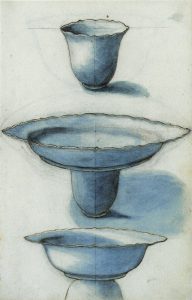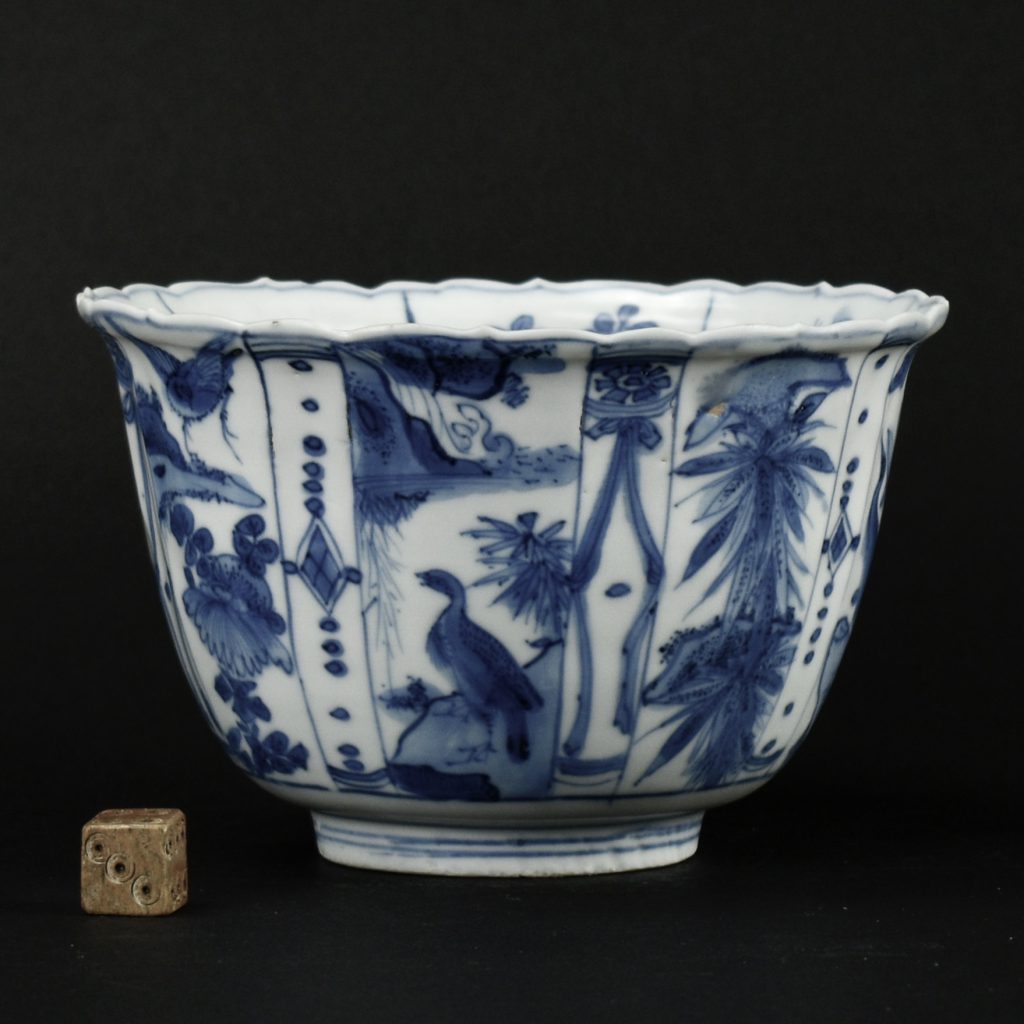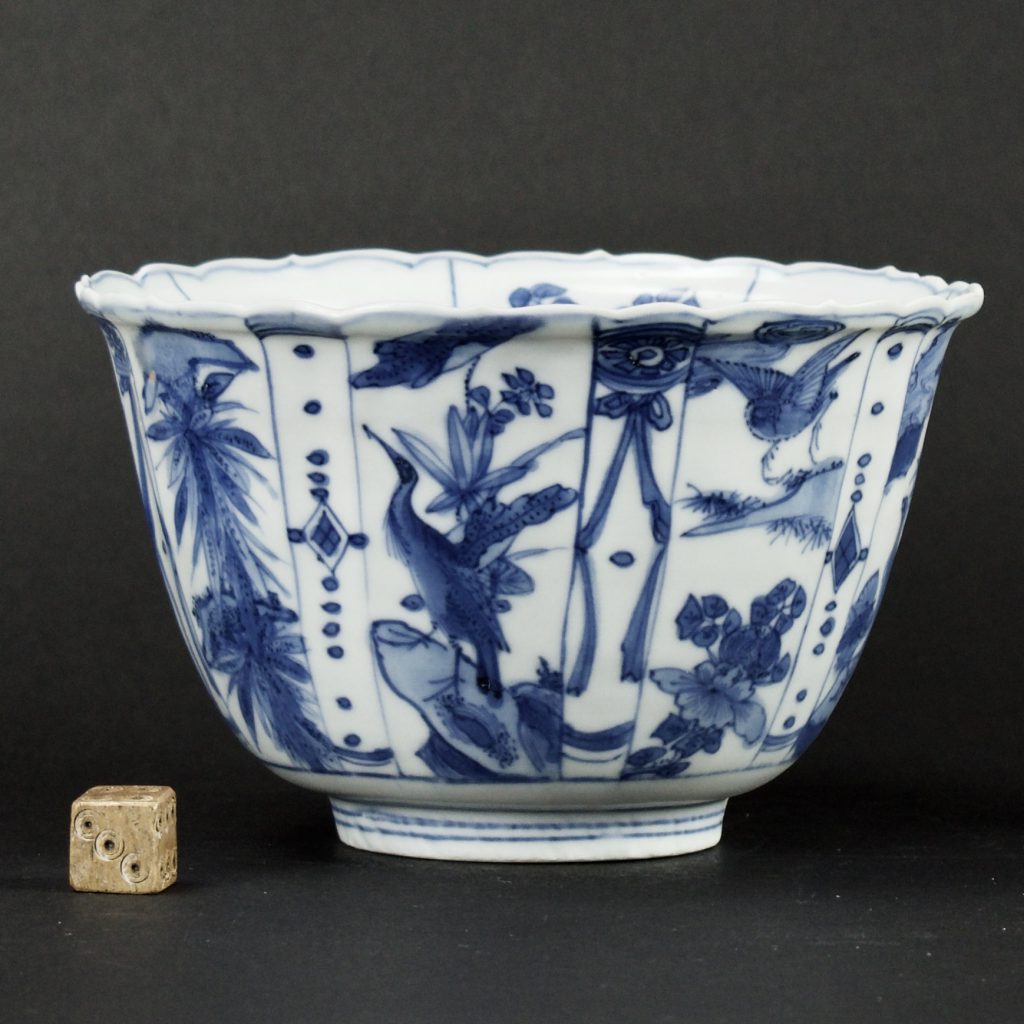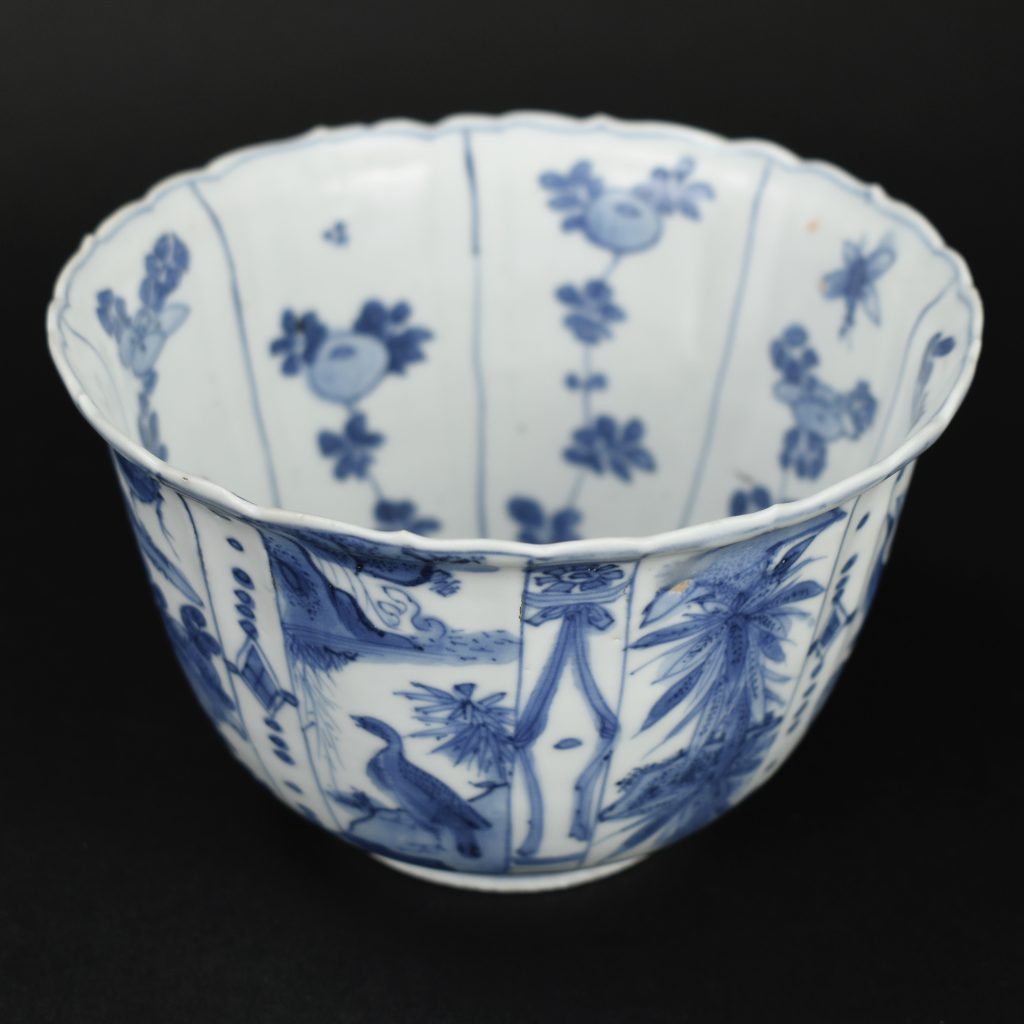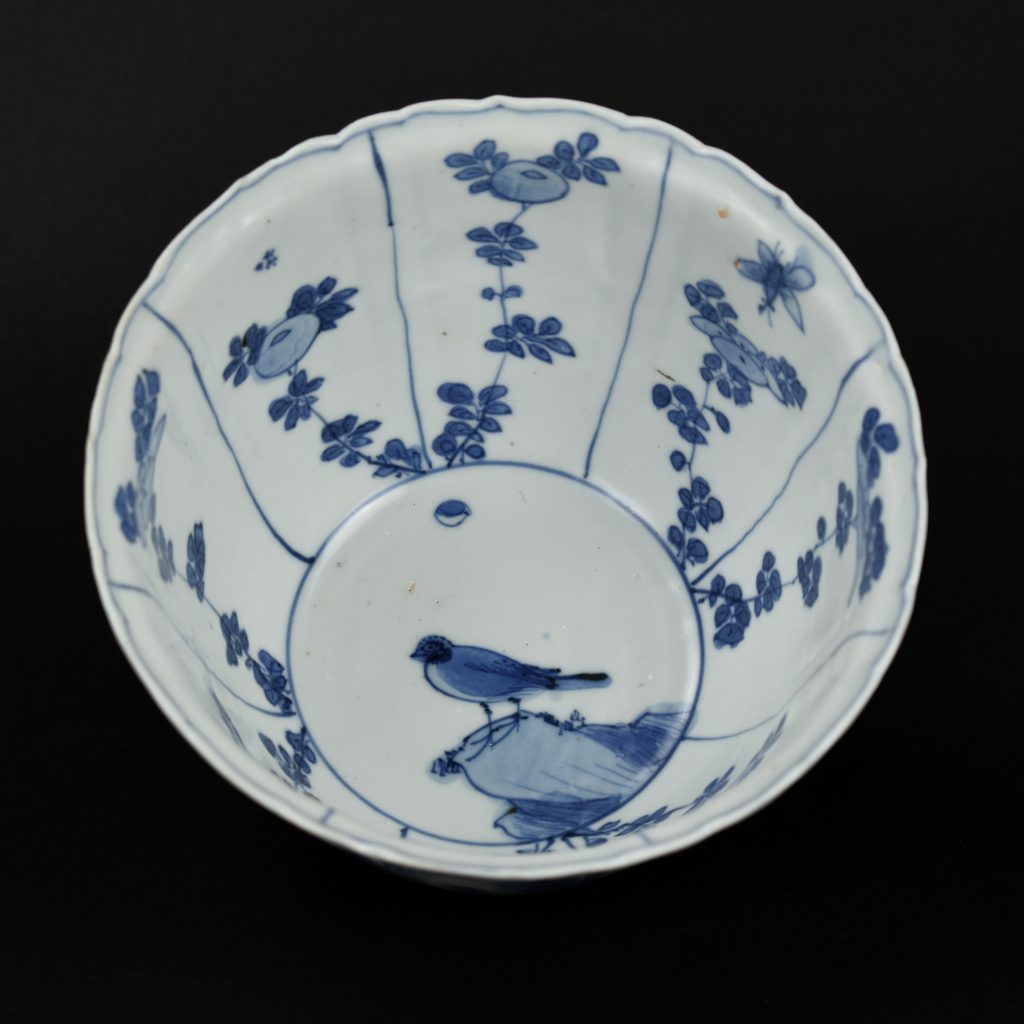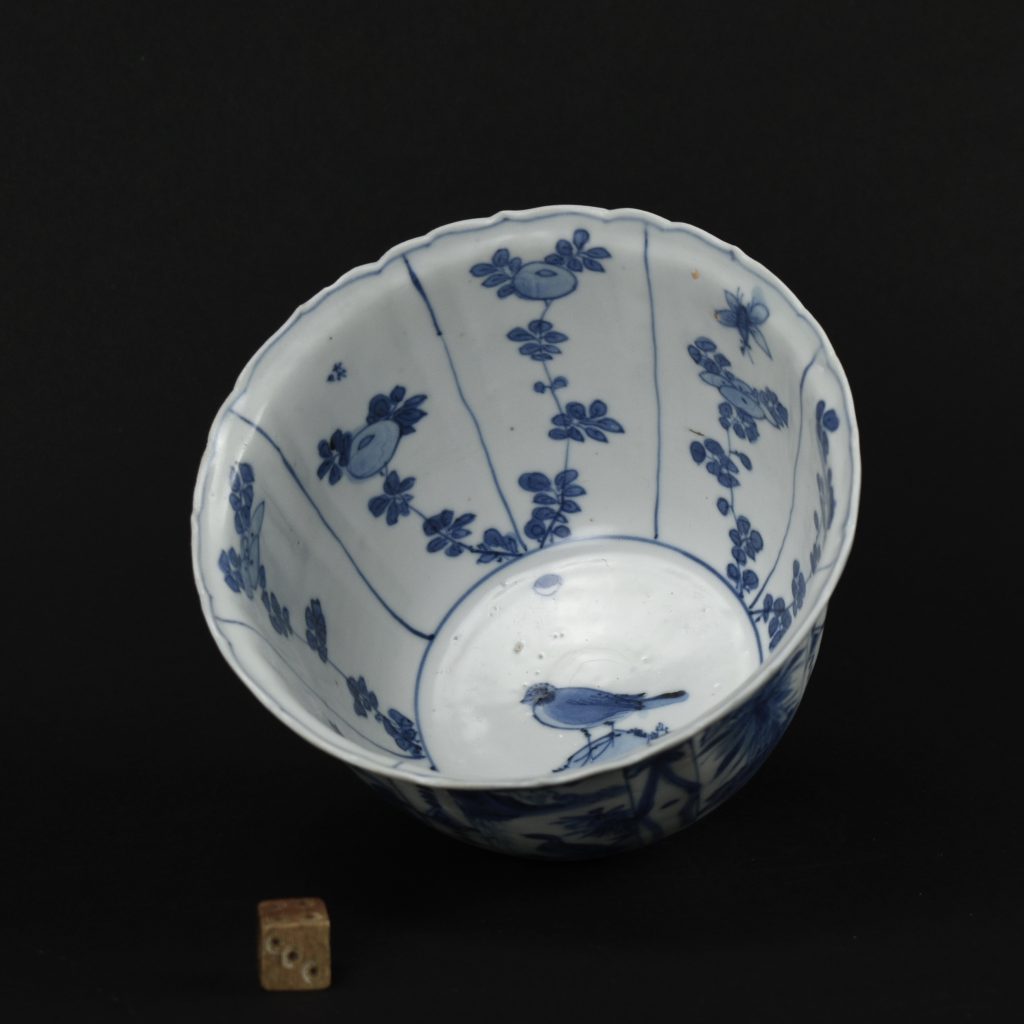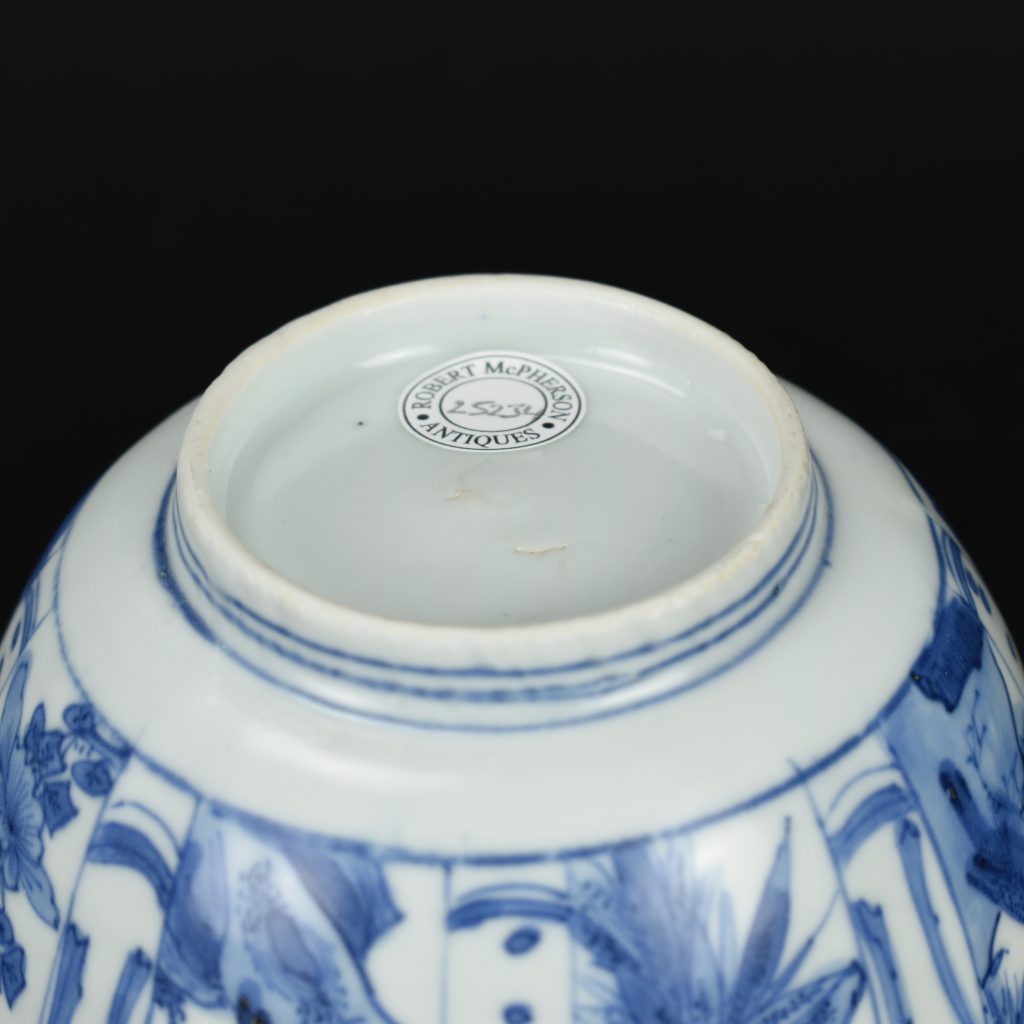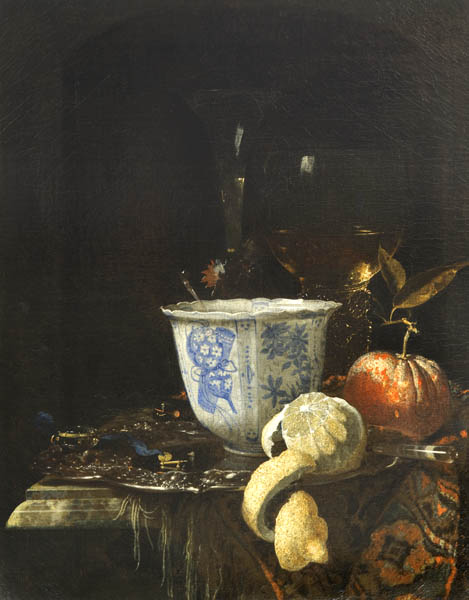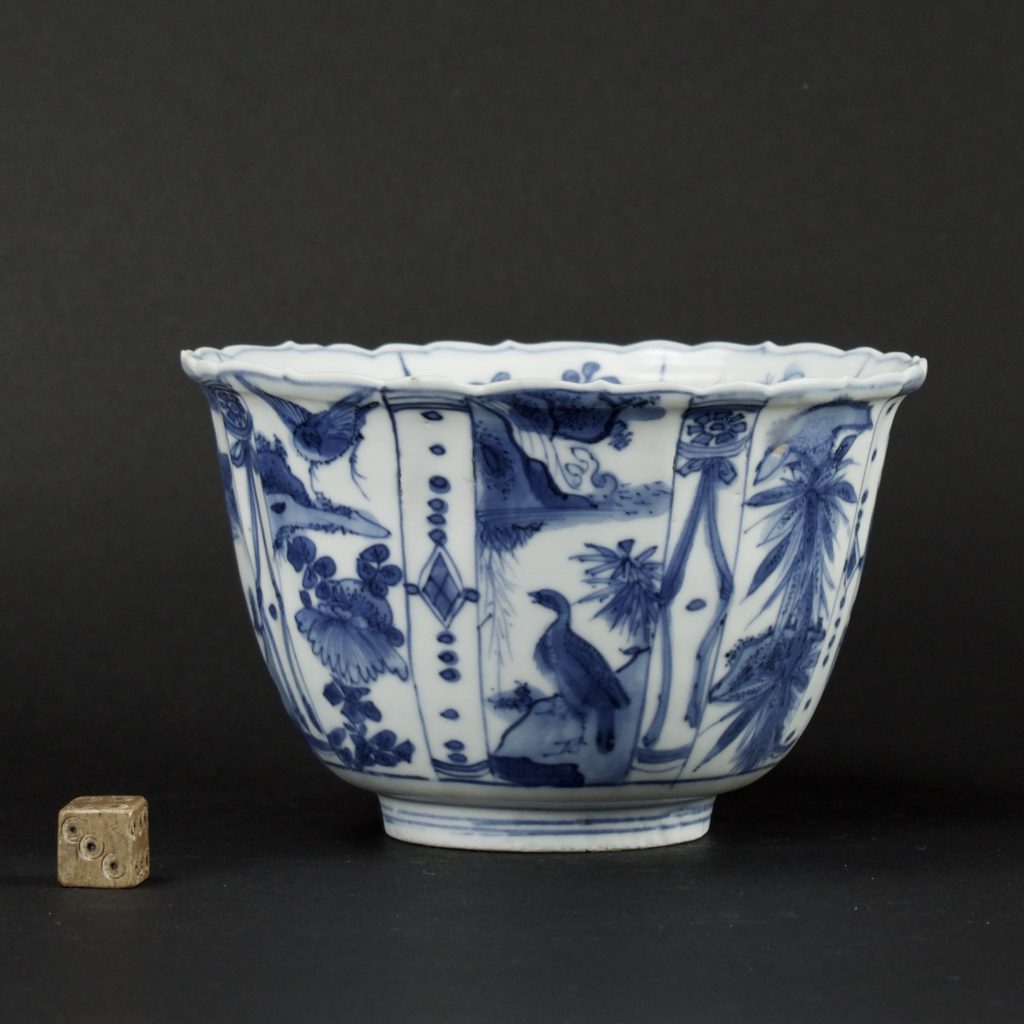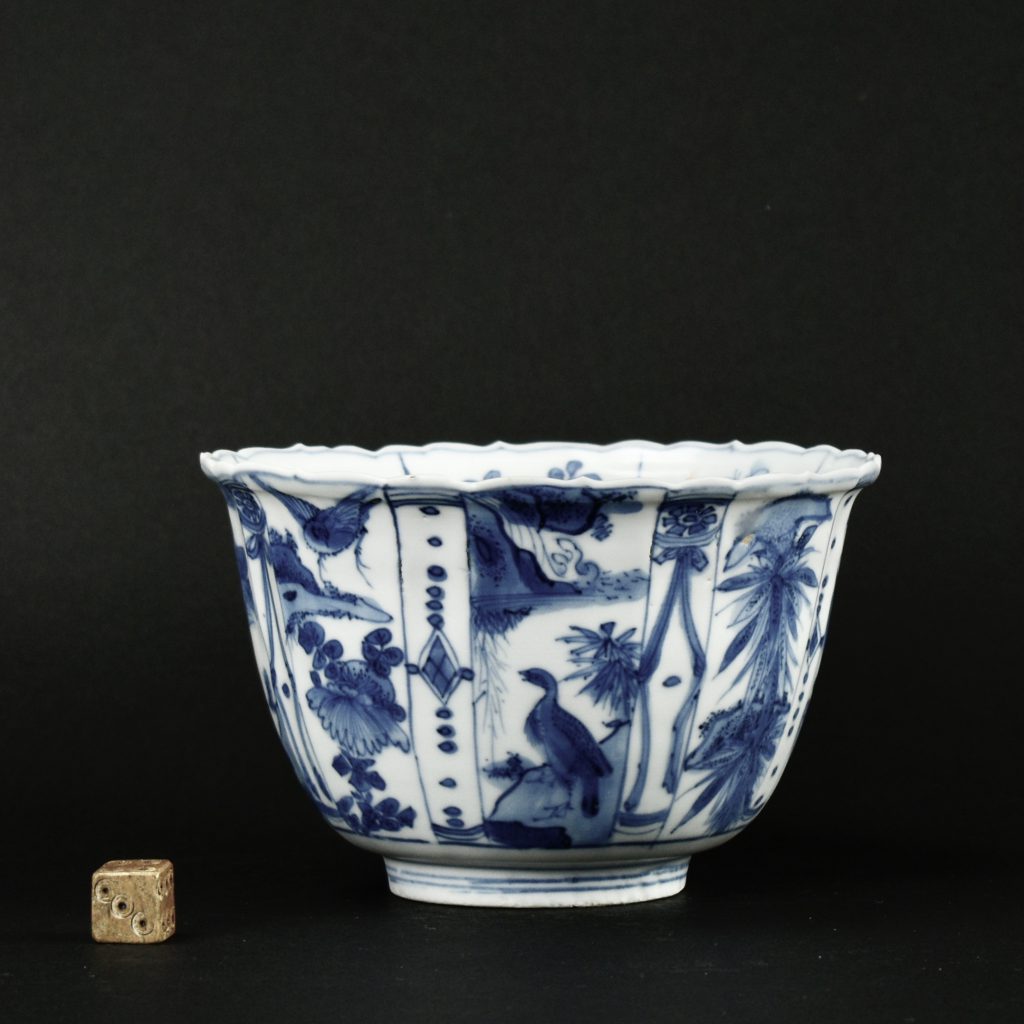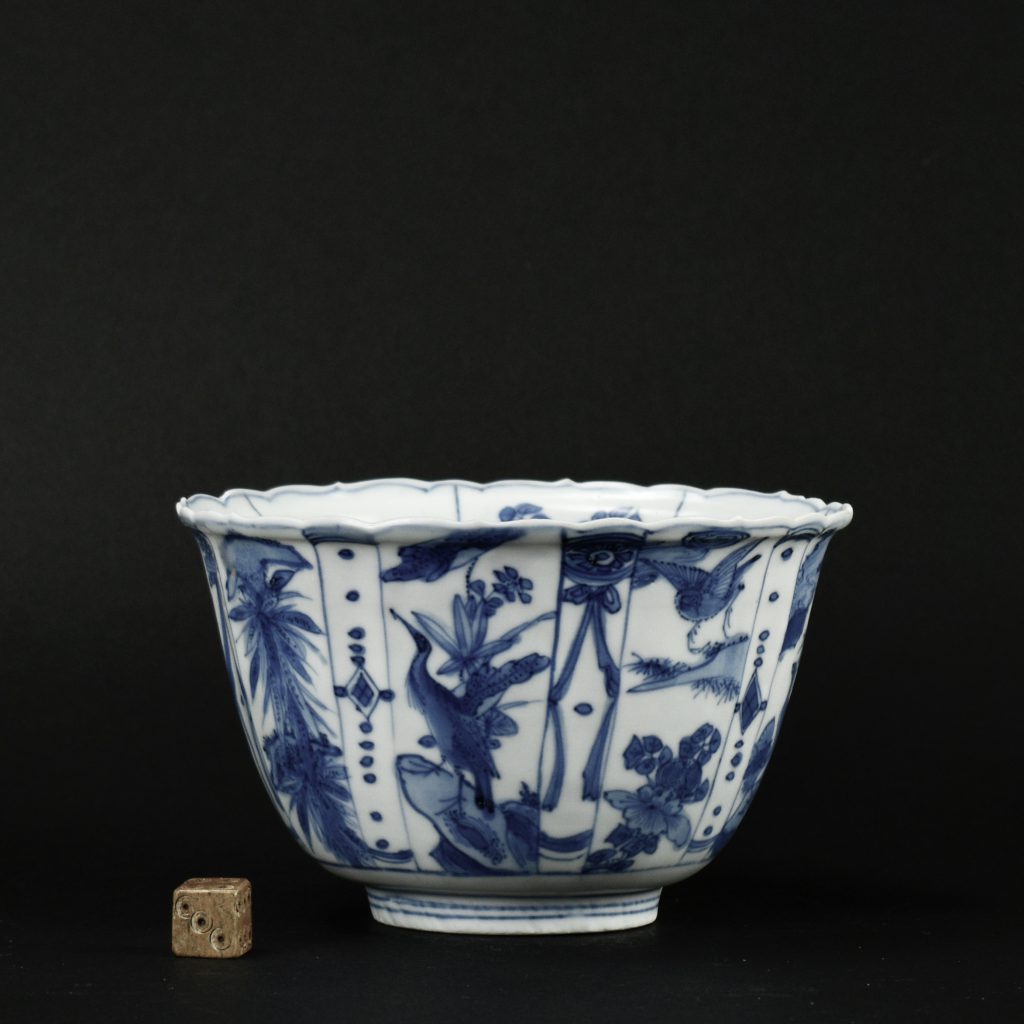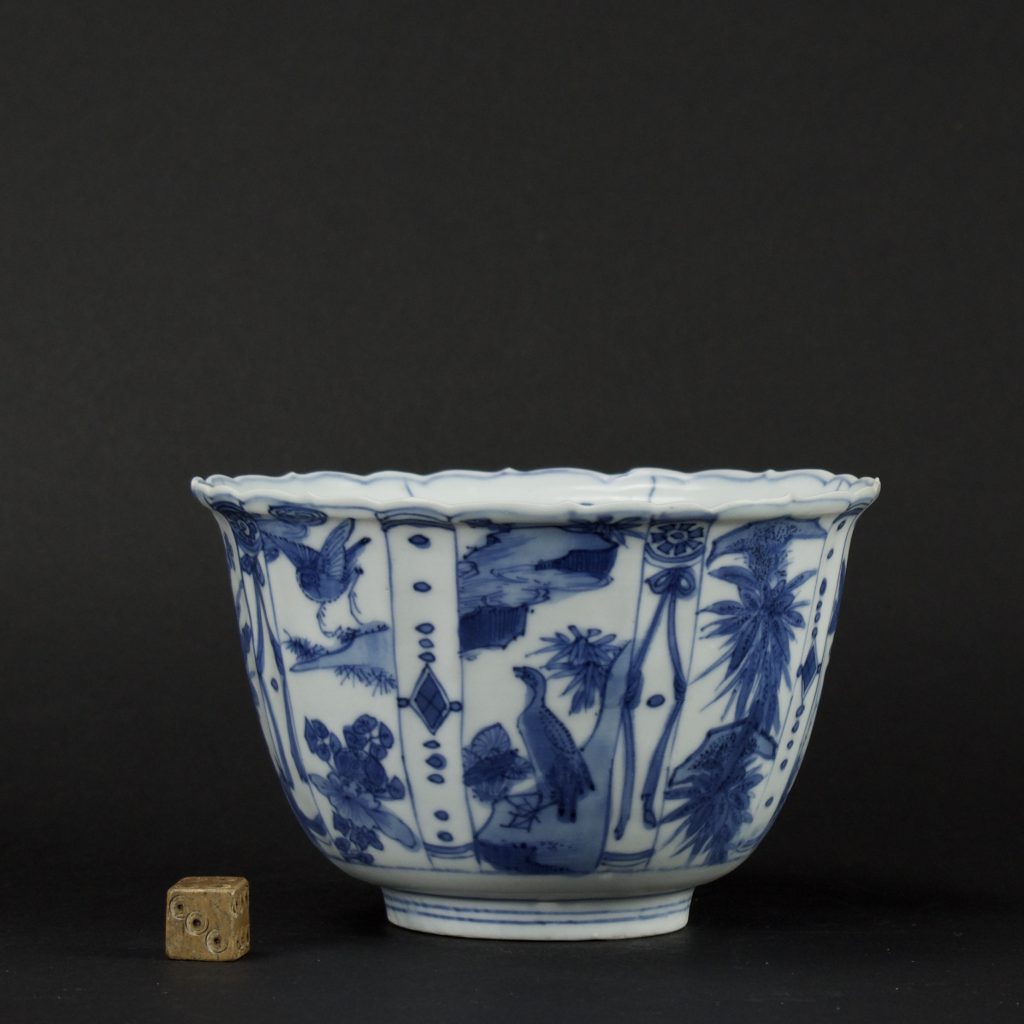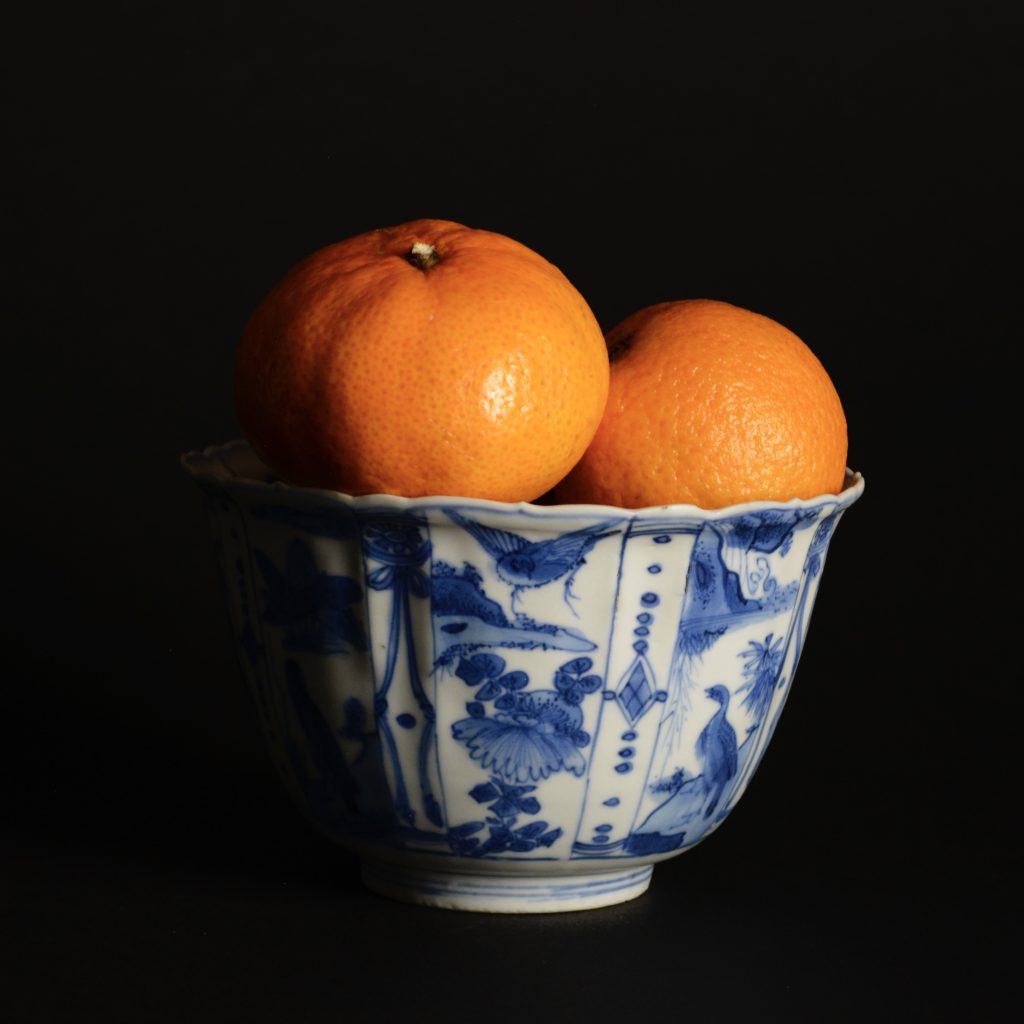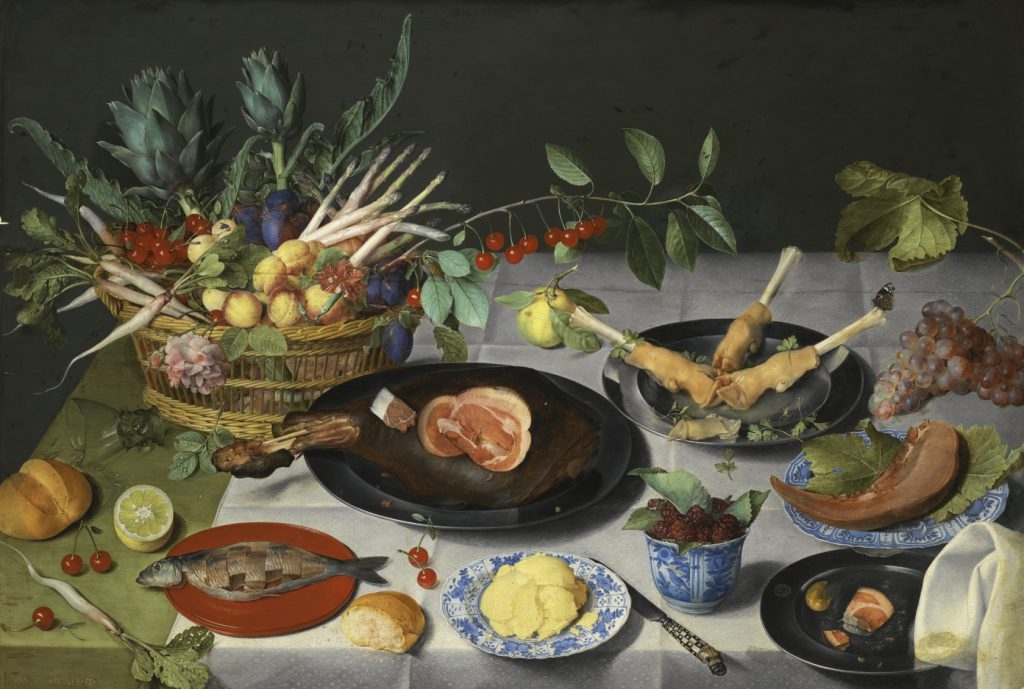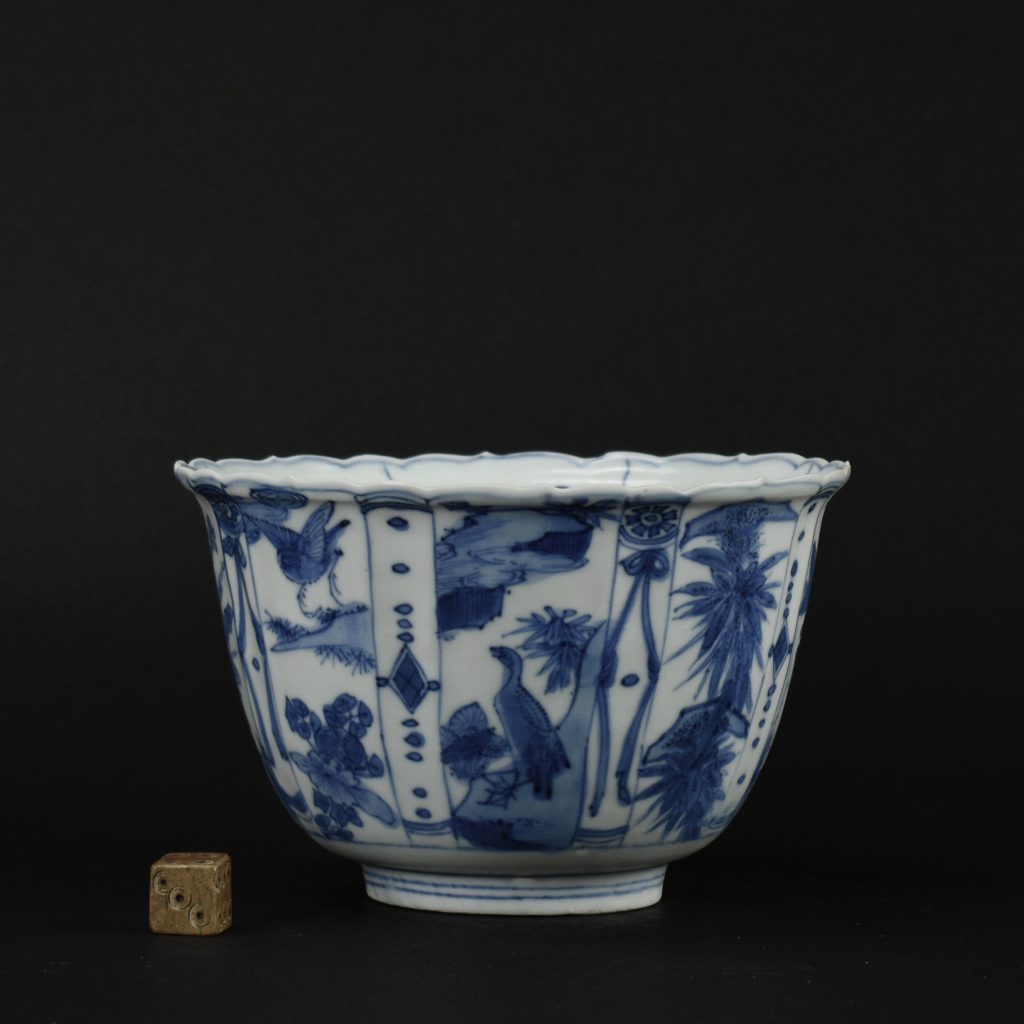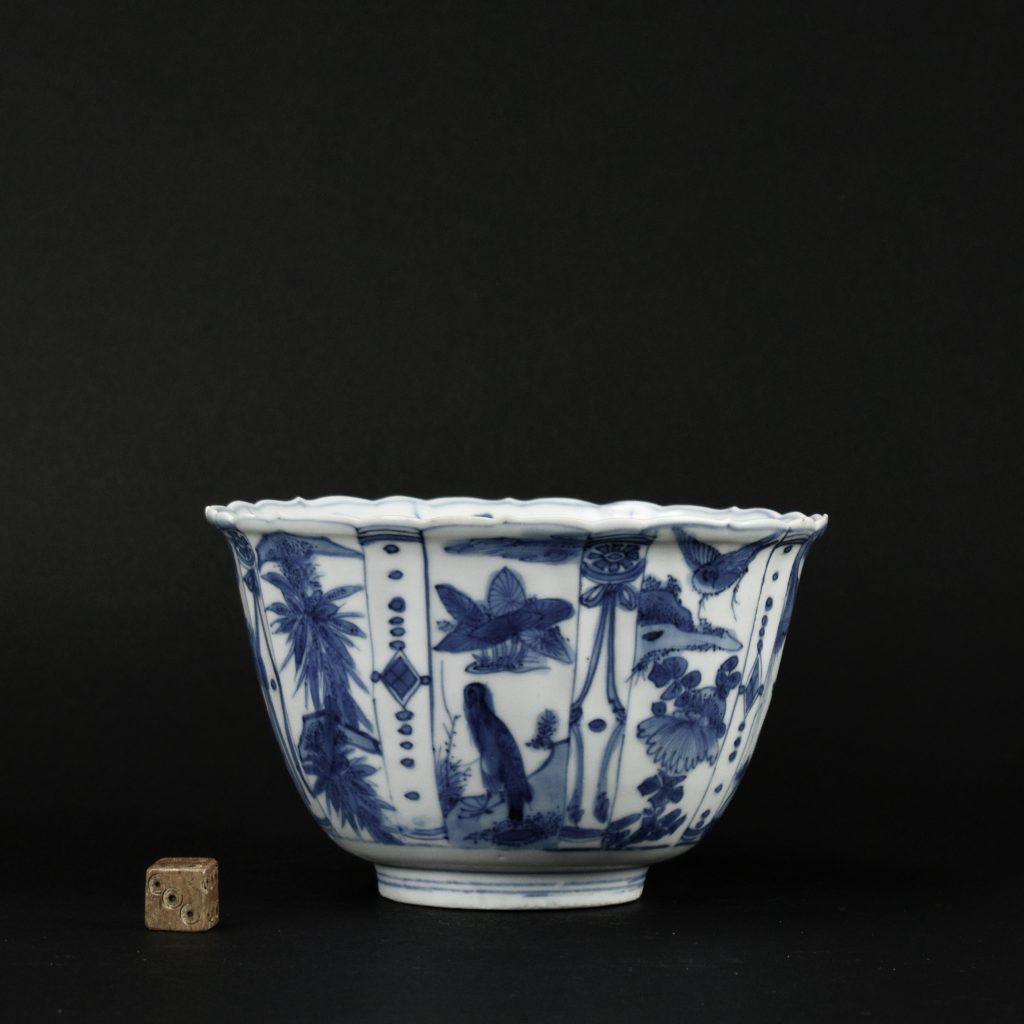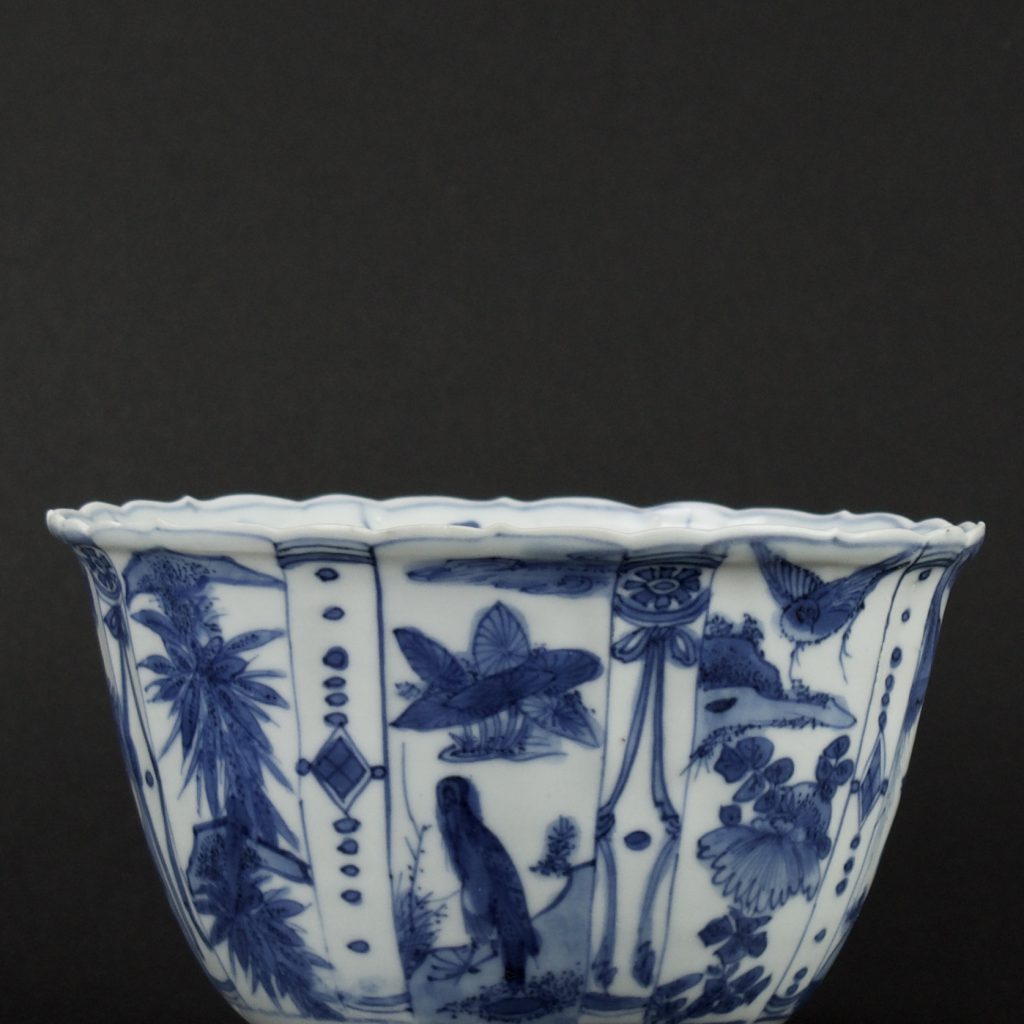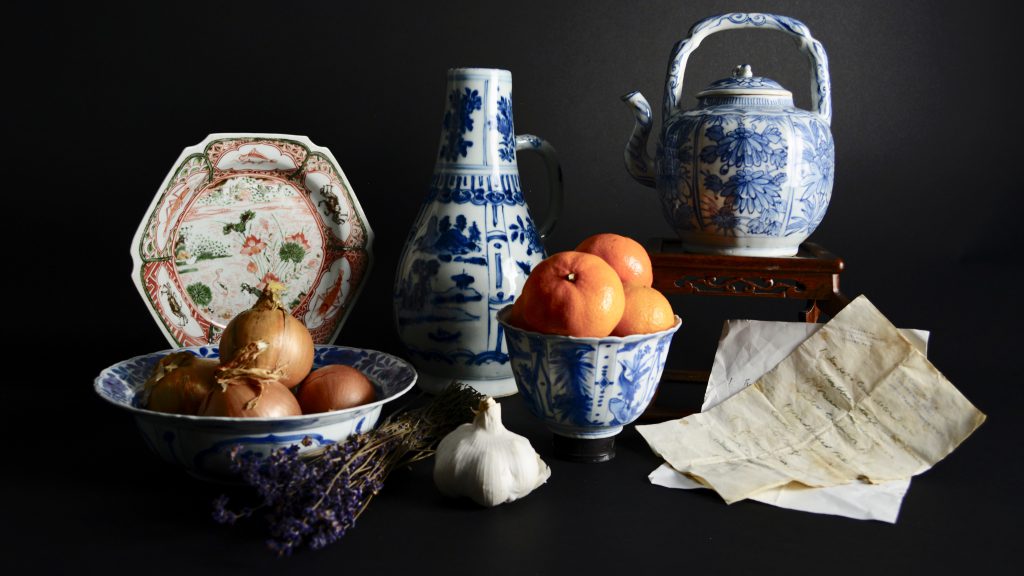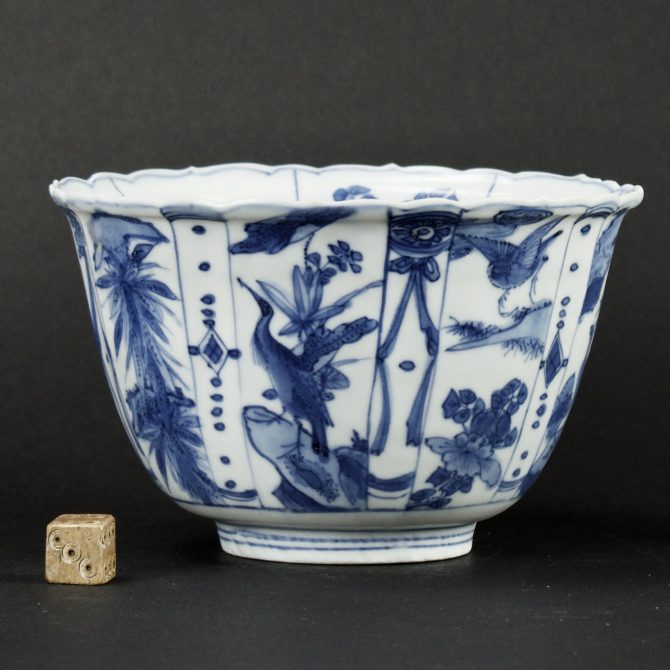
A Fine Ming Kraak Ware Camel-Cup
A Fine Wanli Kraak Porcelain Cameelscoppen or Camel-Cup, Late Ming c.1590 – 1600. Jingdezhen, Jiangxi Province, perhaps Guanyinge Kilns. This very thinly potted moulded bowl is delicately painted with typical Kraakware panels of birds in landscapes close to water. The well of the bowl depicts a bird on a rock. Kraak porcelain bowls of this type were referred to as ‘Crow Cups’ after the Dutch term Kraaikops. These small often lightly potted moulded porcelain bowls with gently curving sides and an everted foliate rim are painted with a bird on a rock to the well of the bowl. The birds are mentioned in the records of the V.O.C. (1603 in a current price list in Amsterdam) but are described as parrots. Cynthia Viallé has found a record describing them as Cameelscoppen or Camel-Cups in the V.O.C. records. In this list various shapes are mentioned, and four sizes given. So the new correct term is now Cameelscoppen or Camel-Cups. However, the late Tijs Volker said that in the V.O.C. recorded Kraakware bowls of this type as Candeelscoppen or Caudle Cups but Cynthia Viallé hasn’t been able to find any evidence of this. A fragment, the base of a bowl with a bird on a rock was excavated at the Guanyinge Kiln site, Jingdezhen, Jiangxi Province. This description is primarily based on the excellent new book : Jingdezhen to the World, The Lurie Collection of Chinese Export Porcelain from the Late Ming (Teresa Canepa, 2019. ISBN 978-1-912168-09-5).
For more information about Kraak Ware porcelain you can go to the History section of our website-menu, or click on the link: Kraak Ware Porcelain.
SOLD
- Condition
- In excellent condition, the delicate thin rim with two glaze frits. The surface of the glaze is very slightly 'dry' but it appears not to come from a shipwreck.
- Size
- Diameter 12.5 cm (5 inches) Height 8.2 cm (3 1/4 inches)
- Provenance
- From an American Private Collection purchased in Indonsia 20 to 30 years ago.
- Stock number
- 25234
- References
- For a Wanli Kraak Bowl of this type and a fragment excavated at the Guanyinge Kilns, Jingdezhen, Jiangxi Province, see : Jingdezhen to the World, The Lurie Collection of Chinese Export Porcelain from the Late Ming (Teresa Canepa, 2019. ISBN 978-1-912168-09-5). Page 110, plate 28. Another similar Kraakware bowl, from the Butler Family Collection, is in : Kraak Porcelain, A Moment in the History of Trade (Maura Rinaldi, Bamboo Publishing,1989. ISBN 1-870076-09-5) page 114, plate 165.
Information
Kraakware Bowls ; Cameelscoppens, Candeelscoppen or Kraaikops
In the decades I have been looking at Chinese ceramics so many terms have changed, the history of Chinese porcelain is still in flux and so much facinating information is still being unearthed. Kraak porcelain bowls of this type were refered to as 'Crow Cups' after the Dutch term Kraaikops. These small often lightly potted moulded porcelain bowls with gently curving sides and an everted foliate rim are painted with a bird on a rock to the well of the bowl. The birds are mentioned in the records of the V.O.C. (1603 in a current price list in Amsterdam) but are described as parrots. Cynthia Viallé has found a record describing them as Cameelscoppen or Camel-Cups in the V.O.C. records. In this list various shapes are mentioned, and four sizes given. So the new correct term is now Cameelscoppen or Camel-Cups. However, the late Tijs Volker said that in the V.O.C. recorded Kraakware bowls of this type as Candeelscoppen or Caudle Cups but Cynthia Viallé hasn't been able to find any evidence of this. A fragment, the base of a bowl with a bird on a rock was excavated at the Guanyinge Kiln site, Jingdezhen, Jiangxi Province. This description is primarily based on the excellent new book : Jingdezhen to the World, The Lurie Collection of Chinese Export Porcelain from the Late Ming (Teresa Canepa, 2019. ISBN 978-1-912168-09-5).
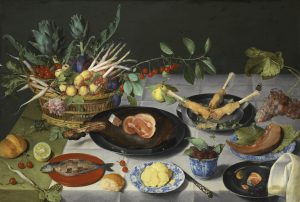
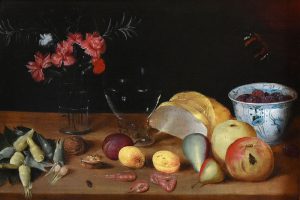
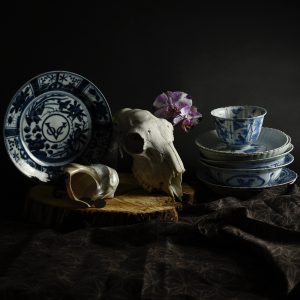
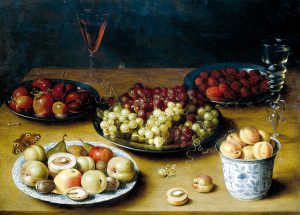
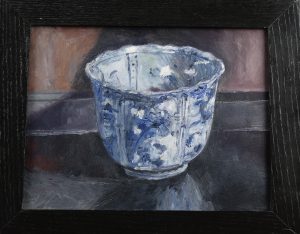
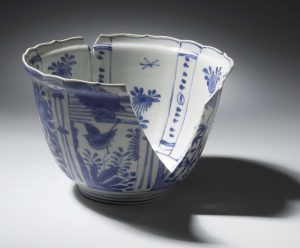
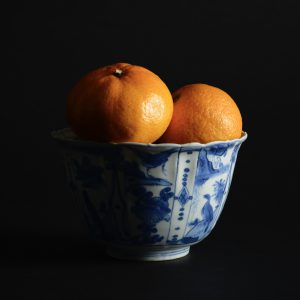
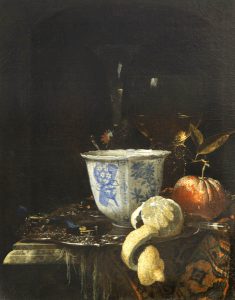
(Rotterdam 1619 – 1693 Amsterdam)
Still life with a Chinese porcelain bowl
. After his return from Paris in 1645/46 Willem Kalf began to paint a new type of still life, which he would continue to produce for the rest of his career: a few valuable objects, carefully arranged, that sparkle against a dark background. The central element in this painting is a blue porcelain bowl from the reign of Emperor Wan-Li (1573-1619), a specimen of the precious exotic pottery that was enthusiastically collected by the wealthy burghers of Amsterdam, where Kalf settled in 1653. The work is generally thought to date from around 1662 because of its similarities to two still lifes in Berlin and Copenhagen which bear that date. Canvas, 52.5 x 41.8 cm; signed
Acquired in 1919; inv. 388
Fondation Custodia / Collection Frits Lugt 121 rue de Lille 75007 Paris.
